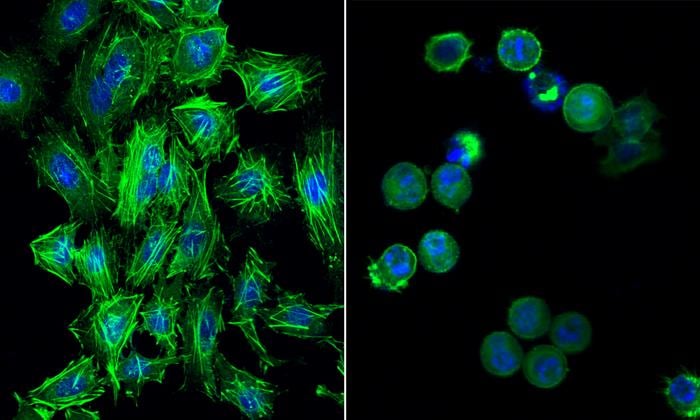Published in European Journal of Medicinal Chemistry | Estimated reading time: 4 minutes
Researchers from RMIT University have engineered a gold-based compound that outperforms cisplatin, the current standard chemotherapy drug, by targeting cancer cells with unprecedented precision. The compound proved 27 times more effective against cervical cancer cells, while showing significantly improved results against other cancer types and demonstrating reduced toxicity to healthy cells.
Distinguished Professor Suresh Bhargava, Director of RMIT’s Centre for Advanced Materials and Industrial Chemistry, led the development of this novel treatment approach. Working with Distinguished Professor Magdalena Plebanski, who heads RMIT’s Cancer, Ageing, and Vaccines Laboratory, the team created a specially modified form of gold that attacks cancer through multiple mechanisms.
Unlike standard chemotherapy drugs that target DNA and can damage both healthy and cancerous cells, this new compound works by blocking a specific enzyme called thioredoxin reductase, which is abundant in cancer cells. Additionally, studies in zebrafish revealed that the compound prevents the formation of new blood vessels that tumors need to grow – a process known as anti-angiogenesis.
The research, bridging ancient wisdom with modern science, builds on gold’s long history in traditional Indian Ayurvedic medicine. “We know that gold is readily accepted by the human body, and we know it has been used for thousands of years in treating various conditions,” notes Bhargava. “Essentially, gold has been market tested, but not scientifically validated.”
Glossary
- Gold(I)
- A chemically reactive form of gold specifically designed to interact with biological systems
- Thioredoxin Reductase
- An enzyme crucial for cancer cell survival that the new gold compound specifically targets
- Anti-angiogenesis
- The process of preventing new blood vessel formation that tumors need for growth
How much more effective was the gold compound against cervical cancer compared to standard treatment?
It was 27 times more potent against cervical cancer cells than cisplatin.
What percentage did the gold compound reduce tumor growth in mice studies?
It reduced tumor growth by 82%, compared to cisplatin’s 29%.
How does this gold compound’s mechanism of action differ from traditional platinum-based chemotherapy?
It targets thioredoxin reductase enzyme and prevents blood vessel formation, while cisplatin targets DNA and affects both healthy and cancerous cells.
Why is the specific chemical form of gold (Gold(I)) crucial for this treatment’s effectiveness, and how does it differ from regular gold?
Unlike noble metallic gold, Gold(I) is chemically reactive and biologically active, specifically designed to interact with cancer cell enzymes while remaining stable enough to reach tumor sites intact.
Enjoy this story? Subscribe to our newsletter at scienceblog.substack.com.
Further Information
- Gold Nanoparticles for the Improved Anticancer Drug Delivery of the Active Component of Oxaliplatin
- Gold-Based Medicine: A Paradigm Shift in Anti-Cancer Therapy?
- Gold Complexes in Anticancer Therapy: From New Design Principles to Particle‐Based Delivery Systems
If our reporting has informed or inspired you, please consider making a donation. Every contribution, no matter the size, empowers us to continue delivering accurate, engaging, and trustworthy science and medical news. Independent journalism requires time, effort, and resources—your support ensures we can keep uncovering the stories that matter most to you.
Join us in making knowledge accessible and impactful. Thank you for standing with us!

